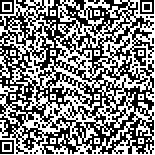附件
|
| 引用本文: | 张渊智,段洪涛.芬兰海岸带水域蓝藻水华遥感监测(英文).湖泊科学,2008,20(2):167-172. DOI:10.18307/2008.0205 |
| ZHANG Yuanzhi,DUAN Hongtao.Cyanobacteria bloom detection and monitoring from satellite observations in the coastal region of Finland. J. Lake Sci.2008,20(2):167-172. DOI:10.18307/2008.0205 |
|
| |
|
|
| 本文已被:浏览 8695次 下载 5204次 |

码上扫一扫! |
|
|
| 芬兰海岸带水域蓝藻水华遥感监测(英文) |
|
张渊智1,2, 段洪涛3
|
|
1.香港中文大学太空与地球信息科学研究所, 香港沙田;2.赫尔辛基技术大学空间技术实验室, 赫尔辛基 02610, 芬兰;3.中国科学院南京地理与湖泊研究所湖泊与环境国家重点实验室, 南京 210008
|
|
| 摘要: |
| MODIS-Terra和MERIS数据被用于芬兰湾蓝藻水华的监测,并对两者的性能进行了比较.研究结果表明:MODIS-Terra波段设置主要针对一类大洋水体,缺乏预警藻蓝素的有效波段;MERIS传感器设置了620nm和665nm波段,基本对应藻蓝素的吸收峰(630nm)和反射峰(650nm),具有蓝藻水华探测的潜力,但在藻华未成型之前,海岸带水体不同优势藻类具有相似的叶绿素特征,较难辨别蓝藻水华.总的来说,MODIS和MERIS数据比较困难实现蓝藻水华初期预警,但可以有效监测已成型的蓝藻水华.这一方法可以用于中国太湖或者海岸带水体藻华探测和监测研究. |
| 关键词: 蓝藻水华 卫星观测 海岸带水体 内陆湖泊 |
| DOI:10.18307/2008.0205 |
| 分类号: |
| 基金项目: |
|
| Cyanobacteria bloom detection and monitoring from satellite observations in the coastal region of Finland |
|
ZHANG Yuanzhi1,2, DUAN Hongtao3
|
|
1.Institute of Space and Earth Information Science, The Chinese University of Hong Kong, Shatin, NT, Hong Kong, P. R. China;2.Laboratory of Space Technology, Helsinki University of Technology, 02610 Espoo, Finland;3.State Key Laboratory of Lake Science and Environment, Nanjing Institute of Geography and Limnology, CAS, Nanjing 210008, P. R. Chma
|
| Abstract: |
| This study investigates and analyses the possibility of cyanobacteria bloom detection as a case study in the Gulf of Finlandand southern Finish lakes. The results show that MODIS data are difficult to be used in cyanobacteria bloom early warning. The mainreason is that MODIS data are more suitable for CASE I waters as there are five bands in the spectral region of 400-550nm. However,for CASE II waters (estuary, coastal, and lakes), the maxima of reflectance spectra are shifting towards longer wavelengths withincreasing turbidity or increasing amount of CDOM. This suggests that the reflectance maximum in coastal waters often occurs in thespectral range of 550-670nm where MODIS data do not have any spectral bands. In contrast, MERIS data have three bands of 560,620, and 665nm at the spectral region of 550-670nm. The two bands at 620nm and 665nm are potentially important bands ofdetecting cyanobacteria bloom of the coastal waters (and/or lakes). The reason is that there are the phycocyanin absorption near630nm and a reflectance peak near 650nm. In fact, MODIS and MERIS data are unlikely applicable to warn potentially cyanobacteriabloom in its early stages, but able to monitor the already formed blooms. This methodology of satellite-based observations can beapplied to detection and monitoring of cyanobacteria bloom in Lake Taihu and coastal regions of China. |
| Key words: Cyanobacteria bloom satellite observations coastal waters inland lakes |
|
|
|
|